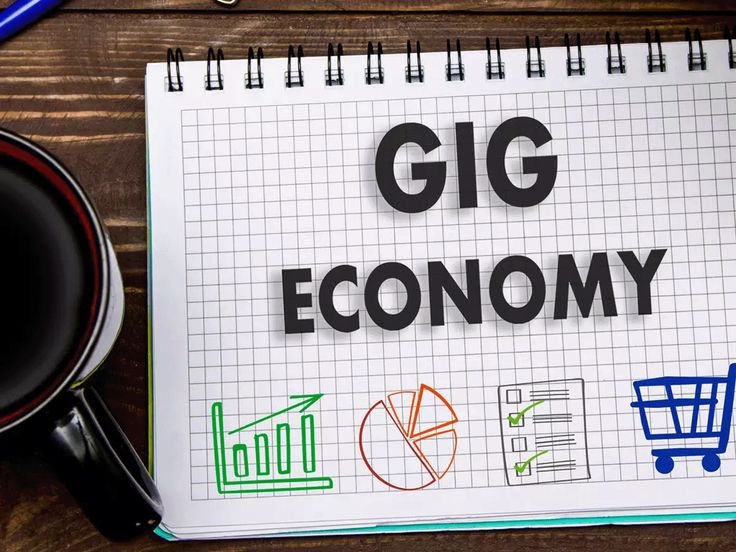
The Gig Economy & Its Financial Impact on Workers: Risks, Rewards, and Realities
The gig economy—fueled by platforms like Uber, DoorDash, Upwork, and Fiverr—has reshaped how millions earn a living. While it offers flexibility and side income, it also brings financial instability, lack of benefits, and hidden costs. Here’s a deep dive into its true impact on workers in 2025.
1. The Rise of the Gig Economy: Key Stats (2025)
- 57 million Americans now freelance or gig work (≈35% of the workforce).
- Top Sectors: Ride-sharing, food delivery, freelance tech/creative work, and micro-tasking (e.g., Amazon Mechanical Turk).
- Global Growth: Expected to hit $455 billion by 2025 (up from $204B in 2018).
Who’s Driving the Trend?
- Gen Z & Millennials: Prefer flexibility over traditional 9-to-5 jobs.
- Retirees & Side Hustlers: Supplementing income post-retirement or between jobs.
- Corporations: Hiring freelancers to cut costs (no healthcare, 401k matches).
2. The Pros: Why Workers Choose Gig Work
✅ Flexibility: Set your own hours, work remotely.
✅ Multiple Income Streams: Diversify earnings (e.g., Uber + freelance writing).
✅ Low Entry Barrier: No degree needed for driving, delivery, or task-based gigs.
✅ Quick Payouts: Instant cash via apps (vs. biweekly paychecks).
3. The Cons: Hidden Financial Pitfalls
A. Unpredictable Income
- Algorithm Changes: Uber/Lyft slashing per-mile rates.
- Demand Swings: Winter = more deliveries; summer = fewer rides.
- No Guaranteed Minimum Wage: Many earn below $15/hr after expenses.
B. No Safety Net
🚑 No Health Insurance: 70% of gig workers lack employer-sponsored plans.
💼 No Retirement Benefits: Must self-fund IRAs/401(k)s.
📉 No Unemployment Insurance: Laid off? No state benefits.
C. Hidden Costs That Eat Profits
- Vehicle Maintenance: Delivery/ride-share drivers spend $3,000+/year on gas, repairs.
- Self-Employment Taxes: Pay 15.3% FICA tax (vs. 7.65% for W-2 workers).
- Platform Fees: Upwork takes 20% of freelancers’ first $500/client.
D. Exploitation Risks
- Wage Theft: Apps deactivate workers without appeal.
- No Labor Protections: Can’t unionize (yet) under current laws.
4. How Gig Workers Can Protect Themselves
A. Financial Survival Strategies
- Track Expenses: Use apps like QuickBooks Self-Employed to deduct mileage, phone bills.
- Save Aggressively: Aim for 3-6 months’ expenses (income is volatile).
- Health Insurance: Use ACA marketplace or freelancer unions (e.g., Freelancers Union).
B. Retirement & Taxes
- Solo 401(k) or SEP IRA: Save tax-efficiently.
- Quarterly Tax Payments: Avoid IRS penalties (use IRS Form 1040-ES).
C. Diversify Income
- Mix Platforms: Don’t rely solely on Uber (try Instacart, TaskRabbit).
- Build Skills: Upskill for higher-paying gigs (e.g., coding, digital marketing).
5. Policy Changes on the Horizon
- AB5 (California) & Similar Laws: Require gig companies to classify workers as employees (with benefits).
- Portable Benefits: Proposed systems where workers carry benefits across gigs.
- Unionization Efforts: Gig Workers Collective pushing for collective bargaining.
2025 Outlook: More legal battles, but little federal reform expected soon.
6. The Bottom Line: Is Gig Work Worth It?
Best For:
- Side hustlers needing extra cash.
- Skilled freelancers (e.g., programmers, designers) charging premium rates.
Worst For:
- Full-time workers depending on unstable apps (delivery, rideshare).
- Those needing healthcare/retirement benefits.
Key Takeaway
The gig economy offers freedom but at a high cost. Workers must plan for taxes, save rigorously, and diversify income to avoid financial fragility.
Are you a gig worker? Share your biggest financial challenge—let’s brainstorm solutions! 💡
Leave a Reply